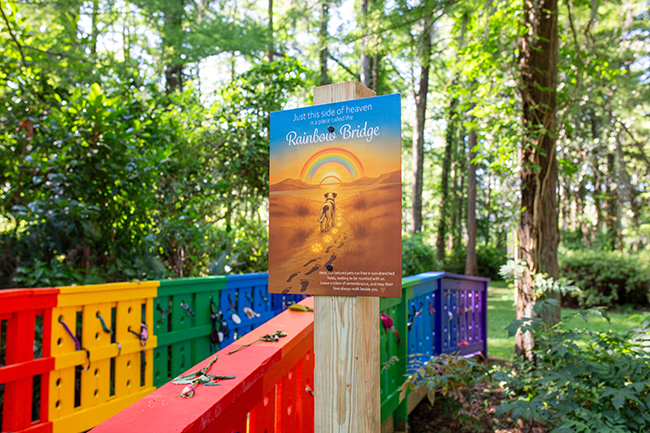Saving Lives From a Saddle
04 Mar 2024
The Coastal Therapeutic Riding Program celebrates 25 years of giving back
By Jade Neptune » Photos by Virginia Gates Photography
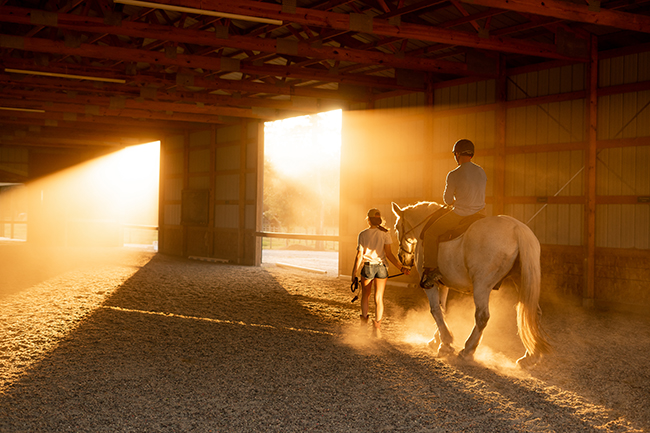
As the sun dipped below the trees and a slight chill crept back into the air on an afternoon in early spring, nearly every parking spot at Russell’s Reach Farm was full. Riders of all ages and abilities rolled into the sandy driveway, calling out, “Hi, Ms. Kim!” when they saw the executive director sitting in an old rocking chair on the porch. One rider stuck out from the rest – a small girl younger than the age of 10, a helmet strapped on her head and a pair of pink glasses resting on the bridge of her nose. She walked quietly through the barn with a speech tablet clutched in her grip, getting ready for her speech therapy session with her favorite horse, Joker. When she reached him, she lifted her small hand to his nose, letting him nuzzle her gently as she leaned her face against his, and whispered hello. This is the magic of the Coastal Therapeutic Riding Program (CTRP).
What is the Coastal Therapeutic Riding Program?
CTRP provides a multitude of therapeutic riding services for individuals with special needs, including riders on a spectrum of all needs and abilities. For some, they take part in therapeutic riding, which consists of equine-assisted activities like games and puzzles on horseback, while others participate in speech and occupational therapies that have more traditional components that you may see in a clinical setting (such as the use of a speech device) while on horseback. For Executive Director Kim Niggel, a lifelong equestrian and a career play therapist, a kind of therapy that supports developmental needs for young clients through games and activities was a natural transition. Over ten years later, she’s seen the program go through monumental changes.
“It was just a couple people who threw it together and now we have 10 horses and 23 acres,” she says, gesturing towards the new covered arena on the property that she recently purchased with her husband so that the program will have a permanent place to call home. “There's just such a huge need for adapted activities for people who have special needs because there's not much for them to do once they age out of school.”
Even as the need and availability for programs like CTRP continues to grow, being able to provide them is complicated and increasingly challenging. Professionals seeking to get certified to provide services must complete a set of field-tested standards to ensure the highest levels of safety, ethics and effectiveness in the industry through PATH International. That program also requires candidates to complete relevant education and pass both written and practical exams before earning certification to deliver equine-assisted services.
“Our clients don't have to have any particular diagnosis,” says Niggel. “We have a lot of kids that don't even have medical issues, but they need a more nurturing environment. Maybe they have attention deficit disorder or something like that and they need a very structured approach that is kind, forgiving and nurturing.”
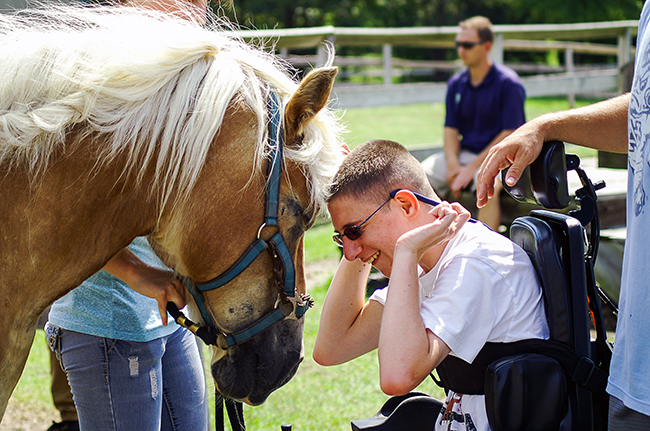
Why Equine Therapy?
According to the National Institute of Health, “hippotherapy is a physical, occupational, and speech therapy that utilizes the natural gait and movement of a horse to provide motor, and sensory input. It is based on improvement of neurologic functions, and sensory processes, and used for patients with physical, and mental disorders.” One of the most impactful advantages of hippotherapy is the close resemblance between the gait of a horse and a human, especially when doing occupational therapy.
“When they're on the horse, they're getting the same movement, so it kicks into their brain like, ‘okay, this foot and then that foot.’ It helps build that skill and teaches the muscles, ‘this is how we move, this is what it feels like,’” explains Niggel as she watches over a speech therapy session taking place under the covered arena. “I think a lot of it is the movement and the actual animal itself has their own sort of sentient pulses. They just have their own character and their own personality. I think it envelops the child and then they meld together. It’s very magical.”
For clients in speech and occupational therapy, they split their session between time on the horse, practicing specific goal-based skills, and then transition into the office setting where they will reinforce what they learned on the horse. Some of the activities they focus on come naturally from the environment around them, like encouraging the client to give the horse verbal commands like “walk on” or listing what kind of animals might live in a pond or on a farm as they have a guided walk around the area.
They have done similar activities like playing basketball on horseback, “planning” Super Bowl parties, and for the holidays they made makeshift Christmas trees on the tops of poles around the arena and decorated them while on their horses.
For some kids though, this is out of the realm of possibility due to various medical conditions and disabilities. Still, Niggel and her team can find a place for them on the farm.
“We've got a little kid who has been doing therapeutic riding. He's severely, severely disabled. Wheelchair, nonverbal, feeding tube, all the things. And he rides a horse,” says Niggel. “For a long time, he was laying down because he couldn't sit up. And he can't sit or spread his legs to sit astride the horse. So we had him laying down for a long time. And then he finally had enough strength that he could sit up. It's amazing.”
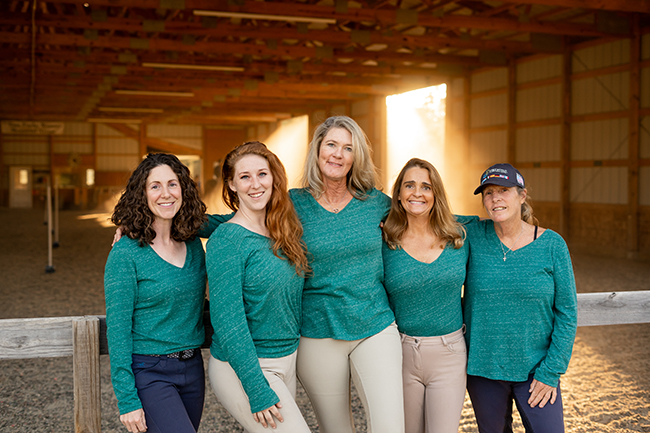
How do you measure progress in equine therapy?
It’s not only clients with special needs and disabilities that benefit from services at CTRP. One of the longest running programs on the farm is one that partners with the local sheriff's office to aid at-risk youth.
“You see these kids come in and they're all tough and gruff and rude and they're intimidated by the horse,” says Niggel. “They're intimidated and then they see this little bitty kid with Down’s Syndrome or something just get up on that huge animal and they're not scared and it's like ‘huh, well they're not scared.’ Then they start helping the child… and they realize they can help them, do something good, and it feels nice to help somebody.”
Created almost twenty years ago, the Elements Youth Violence Intervention Program is conducted through the New Hanover County Sheriff’s Department as a task force designed to combine education, prevention, intervention and diversion strategies to address youth violence.
“The kids realized there was more to the world than that little pocket of life that they were exposed to, and with the animals they would come out and do chores and help with projects,” says Niggel. “They're here one day a week and they bring the kids out, so it's different kids every week, but it's just amazing. They just needed to be given the chance to do good, and then once they've done it and they realize how good it feels, it's just like anything else.”
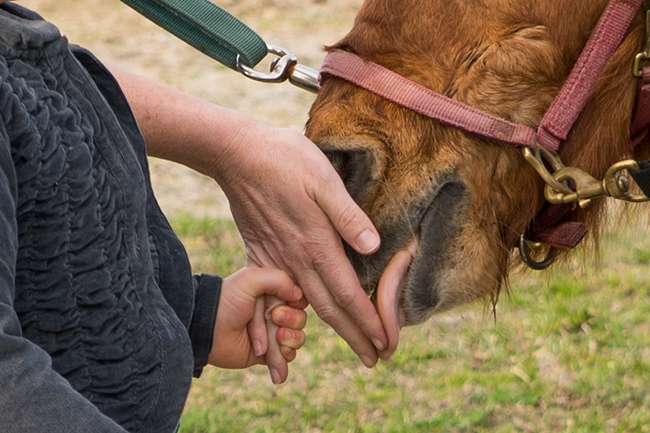
How can you get involved?
CTRP thrives on volunteers and financial support. This spring, there will be the annual auction and party for the Kentucky Derby which is a fun and exciting opportunity to connect with the community and support CTRP simultaneously. Additionally, there are opportunities to volunteer regularly on the farm or even to join the Board of Directors. For more information,
contact volunteerwithctrp@gmail.com.
Measuring the impact and benefits of equine therapy can be difficult to describe and changes from client to client. Like many things, it is best understood when seen with your own eyes, boots in the stirrups and the smell of hay tickling your nose. But at CTRP, they have no shortage of examples to show the good they’ve done and inspired others to do.
In an office at the farm, there is a small wooden box sitting on a bookshelf. It is an urn, holding the ashes of a passed horse that spent most of its life riding at CTRP, where it was adored by countless riders. On the box, the inscription says it best. It reads, “Billy, Thank you for the lives you’ve saved.”





